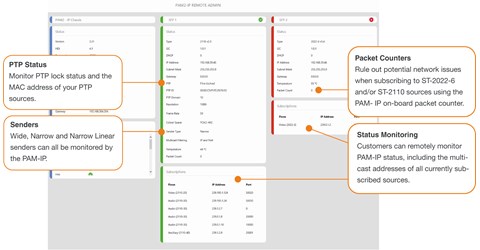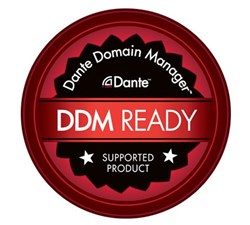Unpacking the Complexities Surrounding the Transition to IP
Whilst the transition to IP is certainly allowing for new efficiencies in operation, and for new business models, it is by no means a guarantee of increased revenues. So, as ever, the expectation remains for customers to do more with less, and to reach more and more consumers across multiple platforms with the same or fewer staff.
Understanding the needs for and the benefits of an IP Infrastructure
Premium 4K/UHD Services - if creating or delivering content in 4K/UHD is part of the business model, IP infrastructure is what makes execution practical.
Ever Larger Scale Routing - In the long term, the lack of flexibility of SDI routing may be problematic. If the number of channels continues to grow after a new SDI router is installed, what then? When very large systems cannot grow or change quickly, business opportunities are lost.
Meeting The OTT Competition - When TV executives took a serious look at the trend, they realized that OTT delivery needed to be a part of their delivery options. IP technology is what makes this possible.
Benefits of IP
Scalability – A leaf and spine architecture is like having a classic SDI router cross point card that has been made elastic. You can stretch it out and expand it without having to replace your router. You can also add extra capacity and remove it. As new opportunities emerge, IP infrastructure enables a faster reaction time to take advantage of them.
New Standards, No Problem - With IP, upgrading to the next video standard no longer means a system rebuild, it could just be a software tweak. Just because we now have 4K it doesn’t mean there won’t be new standards arriving to improve image and audio quality that will require facility upgrades. We will never be done with format and standard changes. On the horizon is high dynamic range (HDR), high frame rate, and even 8K and VR. But once you have your video in all those IP packets, it does not matter if the format is 4K or 8K, the fundamental architecture remains unchanged.
Less Costly Program Testing - The ability to add or remove production workflows and digital distribution at will gives the opportunity to test new programming ideas without building physical infrastructure. The ease of re-configuring workflow and distribution could usher in a renaissance of television programming experimentation. Now, consider this: combining a better understanding of viewer preference via IP distribution, with the ability to test new programming without building dedicated infrastructure, can give a competitive advantage in creating hit TV programming.
What Can TSL Offer to Ease the IP Transition?
With a technical team of experts who have been embedded in the IP since it’s very beginning, we understand the intricacies that making the move to IP can involve. Although SMPTE-2110 has been ratified, that is just the beginning. The industry now turns to how IP broadcast systems can be controlled. As a member of AMWA, TSL is actively working with those leading the research in to the practical application of NMOS. In addition, our flagship PAM-IP range of audio monitors include control APIs for In-Band and Out-of-Band control.
A bit about control in IP Networks
(we think it's important for the Audio guys too)
- Traditional SDI broadcast infrastructures place the router at the core of the plant which is then controlled using an external router control system, this is what the IT industry would typically call ‘Out of Band' Control.
- Early IP deployments maintained the concept of ‘Out of Band Control’ but as the SDI router had now been replaced with an I.T. switch, Out of Band commands were instead issued directly to the broadcast devices connected to the switch, rather than the switch itself. Using IGMP, these ‘edge devices’ could then request which flows they subscribed to, as directed by the Control System.
- Whilst the ST-2022-6 and ST-2110 standards are helping to ensure compatibility and interoperability between IP edge devices from different manufacturers, these standards do not address the control paradigm.
- This is where AMWA’s NMOS specifications are helping to address this very control paradigm with IS-04 allowing device discovery and registration, IS-05 providing device connection and management and not forgetting IS-07 for event and tally management.
Read more via the Broadcast Bridge in the Essential Guide – A Practical Approach to IP.
PAM-IP – ST-2022-6 and ST-2110 Made Easy
- A key challenge for any audio solution is to create and present an operational experience that is both simple and intuitive, regardless of the method being used to carry audio throughout a broadcast facility.
- The transition to IP infrastructures, coupled with the need to do more with less, only serves to increase the importance of being able to address this challenge.
- Developed specifically to address the requirements of customers monitoring uncompressed SMPTE 2022-6 and SMPTE 2110 sources, the PAM-IP features 2 x 10Gig/E interfaces, enabling direct connection to redundant IP networks.
- Customers looking to monitor IP video and audio sources require an intuitive and familiar user interface along with a straightforward method of operation. The PAM-IP also features Primary and Secondary Dante ports, SDI, AES and Analogue connections for use with traditional infrastructures.
PAM-IP Remote Dashboard




